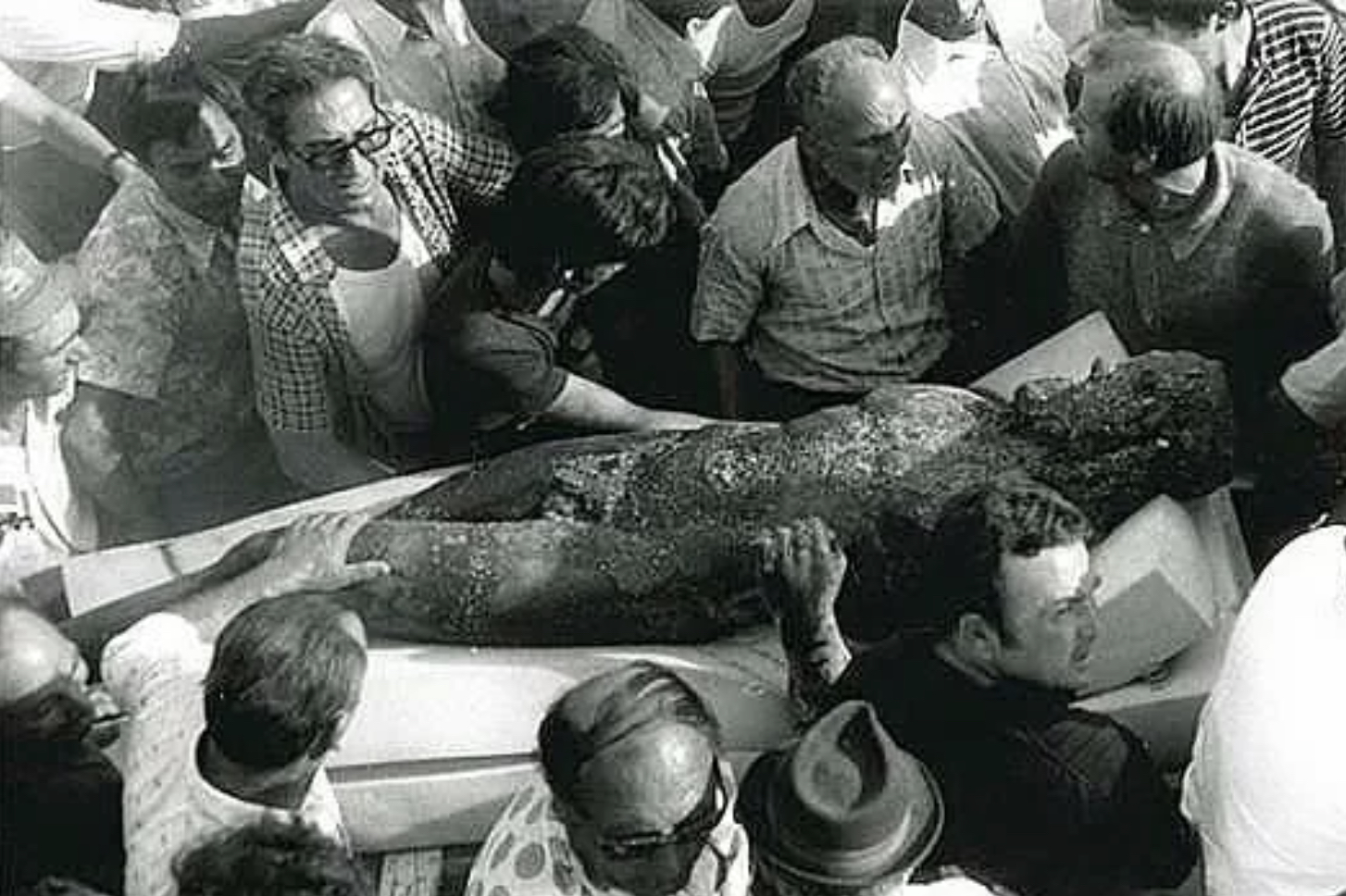The Riace Bronzes, considered among the most significant examples of classical Greek art, are the two bronze statues depicting two naked men, originally armed with shield and spear, which became the symbol of the city of Reggio Calabria.

The Riace Bronzes were found in 1972, at the bottom of the Ionian Sea, near the town of Riace Marina, by a passionate diver during a dive about 200 m from the coast and at a depth of 8 m. The divers initially thought they had found the remains of a corpse. Immediately after the discovery, officials were informed, and a police diving team under the supervision of archaeologists lifted the two figures with air balloons. Further exploration of the discovery area in 1972 and 1981 revealed a hull part containing 28 lead rings and two bronze axles, possibly used as part of a ship sail.
The lifting of the Riace warriors from the seabed by Italian police divers in August 16. 1972 was one of the greatest archaeological moments in the history of underwater archaeology.
The Bronzes of Riace are original works of the mid-fifth century BC. The bronzes depict two completely naked men with beards and curly hair, the left arm bent and the right lying along the side. Both wore a helmet, held a spear or sword in their right hand, and a shield with their left arm. These are the elements that were disassembled at the time of embarkation to allow the statues to be placed on their backs and facilitate transportation.

The two statues are made of bronze, with a very tenuous thickness, except for silver, calcite, and copper details. The statues are commonly referred to as “Statue A” and “Statue B”. The ‘older’ man, known as Riace B, wears a helmet, while the ‘younger’ Riace A has nothing covering his rippling hair.
The Riace Bronzes are 1.98 (Statue A) and 1.97 (Statue B) meters high and weigh about 160 kg. The bronzes have considerable muscle elasticity being in a position defined as “chiasmus”. Bronze A (the young man) appears more nervous and vital, while bronze B (the older man) seems more relaxed. The statues convey a remarkable sense of power, mainly due to the arms being strongly distanced from the body. Bronze B’s head is oddly shaped and appears small because it wears a Corinthian helmet. The right arm and the left arm of the B underwent second welding, probably for restoration in antiquity.
The hypotheses on the origin, dating and the authors of the statues are different. It is generally thought that two separate Greek artists created them 30 years apart around the 5th century BC. Dating back probably to the mid-fifth century BC, it is assumed that the Bronze Statues were thrown into the sea during a storm to lighten the ship that carried them or that the boat itself had sunk with the statues. The first restoration was carried out in 1975-80 in Florence. In addition to the total cleaning of the surfaces performed with specially designed instruments, in Florence, the statues were subjected to radiographic analysis, necessary to know the internal structure, the state of preservation, and the metal’s thickness.

During the meticulous cleaning process, it was discovered that a different material from bronze was used for some details. The two statues are made of bronze of very slight thickness, except for some silver, calcite, and copper details. The teeth of Statue A are in silver. The nipples, lips, and eyelashes of both statues, as well as the traces of a cap on the head of Bronze B are made of copper. The sclera of the eyes, whose irises were made of glass paste, is in white calcite while the lacrimal caruncle is made of a pink stone.
When the Riace Bronzes first went on display in 1981, a million people came to see them.
Reconstruction of Riace Bronzes. Gods in Color – Golden Edition, The Frankfurt Exhibit, 2020.
When the Riace Bronzes first went on display in 1981, a million people came to see them. The statues are now on display at the Archaeological Museum of Reggio Calabria.
